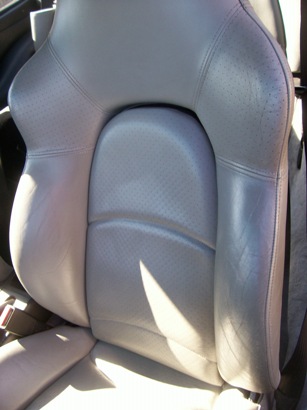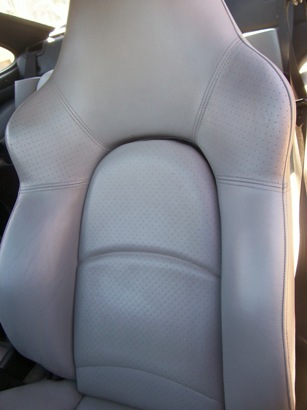As a leather repairman, It may make sense that I try to talk folks out of repairing their own leather damage so they pay me to do it. Instead, I have found that talking through each customer situation helps me build trust with them and find the best solution for their situation. Sometimes the damages are simple enough to repair that a do-it-yourself option is actually your best option. For instance, minor scuffs or scratches on a black leather car seat can certainly be repaired with a good touch-up kit and the right instruction. Also, If the customer is at least a little "handy" and enjoys repair projects they can learn the skills and techniques for minor repairs. On the other hand, even when I offer a do-it-yourself solution some customers are not interested and would rather pay me for a professional job. I am open to either option.
For example, I recently did some restoration work on the front seats of a Porche. Bruce in Annapolis is an avid Porche owner and somewhat handy guy. He said he had gone onto a Porche message board, received a kit solution recomendation from someone there, and use the kit. In fact, when the discoloration on the seat was minor he said that the kit was a good solution (though the color was a little off). But he reached a point where he no longer felt the kit was helping and he hired me. He payed me to come to his work in Annapolis and I did the work for him in about 2 hours. Here are some pictures of the work:
 Here is Bruce’s Porche drivers
Here is Bruce’s Porche drivers
seat before the repairs. The dirty,
cracking leather, especially on the
backrest bolster to the right of the
picture, was his main concern.
 Here is a picture from during
Here is a picture from during
the process of repairing the leather.
I put it here just to show that sometimes the
more complicated process of professional
repair is a bit much for the average
consumer. In this example I am using a
heat-cured leather repair compound to fill
the cracking in the bolster. Then I will sand,
re-apply the compond, re-sand, clean,
match and apply color then finally apply
a clear topcoat.
 Here is the completed leather repair.
Here is the completed leather repair.
Not a great picture, but you can see
the clean, smooth bolster. Such result
would be difficult with an average leather
touch-up kit. Again, I find that encouraging
people toward do-it-yourself kits is sometimes
appropriate. But not always.
